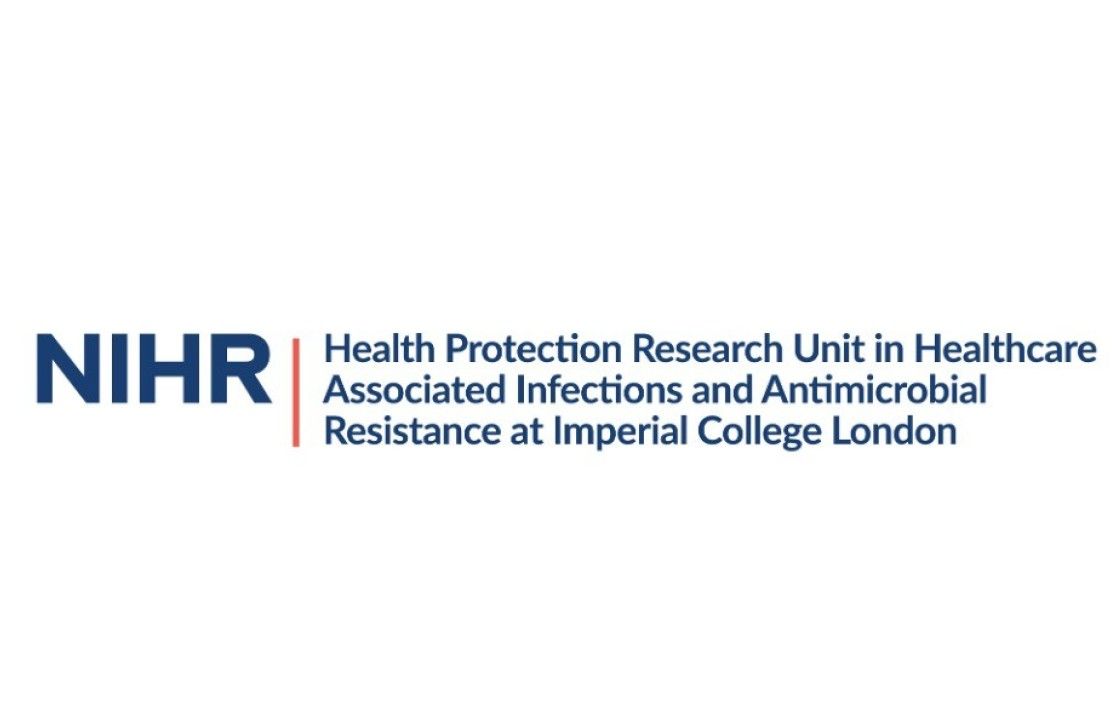Results
- Showing results for:
- Reset all filters
Search results
-
Journal articleYates TA, Khan PY, Knight GM, et al., 2016,
The transmission of <i>Mycobacterium tuberculosis</i> in high burden settings
, LANCET INFECTIOUS DISEASES, Vol: 16, Pages: 227-238, ISSN: 1473-3099- Author Web Link
- Cite
- Citations: 120
-
Journal articleArdal C, Outterson K, Hoffman SJ, et al., 2016,
International cooperation to improve access to and sustain effectiveness of antimicrobials
, LANCET, Vol: 387, Pages: 296-307, ISSN: 0140-6736 -
Journal articleCastro Sanchez E, Chang PW, Vila-Candel R, et al., 2016,
Health literacy and infectious diseases: why does it matter?
, International Journal of Infectious Diseases, Vol: 43, Pages: 103-110, ISSN: 1878-3511OBJECTIVES: Multifactorial interventions are crucial to arrest the threat posed by infectious diseases. Public involvement requires adequate information, but determinants such as health literacy can impact on the effective use of such knowledge. The influence of health literacy on infectious diseases is examined in this paper. METHODS: Databases were searched from January 1999 through July 2015 seeking studies reporting on health literacy and infections such tuberculosis, malaria or influenza, or infection-related behaviours such as vaccination or hand hygiene. HIV was excluded as comprehensive reviews had already been published. RESULTS: Studies were found on antibiotic knowledge and use, adoption of influenza and MMR immunisations, screening for sexually transmitted and viral hepatitis infections. There was a lack of investigations on areas such as tuberculosis, malaria, hand hygiene or diarrhoeal diseases. CONCLUSIONS: Limited or insufficient health literacy was associated with reduced adoption of protective behaviours such as immunisation, or inadequate understanding of antibiotics, although the relation was not consistent. Large gaps remain related to infectious diseases with high clinical and societal impact such as tuberculosis or malaria.
-
Journal articleMoore LSP, Owens DS, Jepson A, et al., 2016,
Waterborne Elizabethkingia meningoseptica in adult critical care
, Emerging Infectious Diseases, Vol: 22, Pages: 9-17, ISSN: 1080-6059Elizabethkingia meningoseptica is an infrequent colonizer of the respiratory tract; its pathogenicity is uncertain. In the context of a 22-month outbreak of E. meningoseptica acquisition affecting 30 patients in a London, UK, critical care unit (3% attack rate) we derived a measure of attributable morbidity and determined whether E. meningoseptica is an emerging nosocomial pathogen. We found monomicrobial E. meningoseptica acquisition (n = 13) to have an attributable morbidity rate of 54% (systemic inflammatory response syndrome >2, rising C-reactive protein, new radiographic changes), suggesting that E. meningoseptica is a pathogen. Epidemiologic and molecular evidence showed acquisition was water-source–associated in critical care but identified numerous other E. meningoseptica strains, indicating more widespread distribution than previously considered. Analysis of changes in gram-negative speciation rates across a wider London hospital network suggests this outbreak, and possibly other recently reported outbreaks, might reflect improved diagnostics and that E. meningoseptica thus is a pseudo-emerging pathogen.
-
Journal articleZingg W, Castro Sanchez EM, Secci, et al., 2015,
Innovative tools for quality assessment: integrated quality criteria for review of multiple study designs (ICROMS)
, Public Health, ISSN: 0033-3506 -
Journal articleOtter JA, Mutters NT, Tacconelli E, et al., 2015,
Controversies in guidelines for the control of multidrug-resistant Gram-negative bacteria in EU countries
, CLINICAL MICROBIOLOGY AND INFECTION, Vol: 21, Pages: 1057-1066, ISSN: 1198-743X- Author Web Link
- Cite
- Citations: 59
-
Journal articlePalmer WL, Bottle A, Aylin PP, 2015,
The association between day of delivery and obstetric outcomes: an observational study
, The BMJ, Vol: 351, ISSN: 0959-8138Objective To examine the association between day of delivery and measures of quality and safety of maternity services and, in particular, compare weekend with weekday performance.Design We examined outcomes for maternal and neonatal records within the nationwide administrative dataset for English hospitals by day of the week. Groups were defined by day of admission (for maternal indicators) or delivery (for neonatal indicators) rather than by day of complication. We used logistic regression to adjust for case-mix factors including gestational age, birth-weight, and maternal age. We also investigated staffing factors using multi-level models to evaluate the association between outcomes and level of consultant presence. Setting English National Health Service public hospitals.Participants 1,332,835 deliveries and 1,349,599 births between 1 April 2010 and 31 March 2012. Main outcome measures The primary outcomes were perinatal mortality and – for both neonate and mother – infections, emergency readmissions and injuries.Results Performance across four of the seven measures was significantly worse for women admitted, and babies born, at weekends. In particular, the perinatal mortality rate was 7.3 per 1,000 babies delivered at weekends, 0.9 per 1,000 higher than at weekdays (adjusted odds ratio [AOR] 1.07; 95% confidence interval 1.02 to 1.13). We did not identify a consistent association between outcomes and staffing, although trusts who complied with recommended levels of consultant presence had a perineal tear rate of 3.0% compared with 3.3% for non-compliant services (AOR 1.21; 1.00 to 1.45).Conclusion The study suggests an association between day of delivery and aspects of performance, and some outcomes appear worse for both women admitted, and babies born, at the weekend. The results would suggest approximately 770 perinatal deaths and 470 maternal infections per year above what might be expected if performance was consistent across women admitted, and
-
Journal articleHolmes AH, Moore LSP, Sundsfjord A, et al., 2015,
Understanding the mechanisms and drivers of antimicrobial resistance
, Lancet, Vol: 387, Pages: 176-187, ISSN: 1474-547XTo combat the threat to human health and biosecurity from antimicrobial resistance, an understanding of its mechanisms and drivers is needed. Emergence of antimicrobial resistance in microorganisms is a natural phenomenon, yet antimicrobial resistance selection has been driven by antimicrobial exposure in health care, agriculture, and the environment. Onward transmission is affected by standards of infection control, sanitation, access to clean water, access to assured quality antimicrobials and diagnostics, travel, and migration. Strategies to reduce antimicrobial resistance by removing antimicrobial selective pressure alone rely upon resistance imparting a fitness cost, an effect not always apparent. Minimising resistance should therefore be considered comprehensively, by resistance mechanism, microorganism, antimicrobial drug, host, and context; parallel to new drug discovery, broad ranging, multidisciplinary research is needed across these five levels, interlinked across the health-care, agriculture, and environment sectors. Intelligent, integrated approaches, mindful of potential unintended results, are needed to ensure sustained, worldwide access to effective antimicrobials.
-
Journal articleAhmad R, Iwami M, Castro-Sanchez E, et al., 2015,
Defining the user role in infection control
, Journal of Hospital Infection, Vol: 92, Pages: 321-327, ISSN: 1532-2939BackgroundHealth policy initiatives continue to recognize the valuable role of patients and the public in improving safety, advocating the availability of information as well as involvement at the point of care. In infection control, there is a limited understanding of how users interpret the plethora of publicly available information about hospital performance, and little evidence to support strategies that include reminding healthcare staff to adhere to hand hygiene practices.AimTo understand how users define their own role in patient safety, specifically in infection control.MethodsThrough group interviews, self-completed questionnaires and scenario evaluation, user views of 41 participants (15 carers and 26 patients with recent experience of inpatient hospital care in London, UK) were collected and analysed. In addition, the project's patient representative performed direct observation of the research event to offer inter-rater reliability of the qualitative analysis.FindingsUsers considered evidence of systemic safety-related failings when presented with hospital choices, and did not discount hospitals with high (‘red’ flagged) rates of meticillin-resistant Staphylococcus aureus. Further, users considered staff satisfaction within the workplace over and above user satisfaction. Those most dissatisfied with the care they received were unlikely to ask staff, ‘Have you washed your hands?’ConclusionThis in-depth qualitative analysis of views from a relatively informed user sample shows ‘what matters’, and provides new avenues for improvement initiatives. It is encouraging that users appear to take a holistic view of indicators. There is a need for strategies to improve dimensions of staff satisfaction, along with understanding the implications of patient satisfaction.
-
Journal articleLaunders H, Jacklin A, Franklin BD, 2015,
Allergy transcription before and after the implementation of an inpatient electronic prescribing system in a tertiary referral hospital: a case study in two oncology wards
, Safety in Health, Vol: 1, ISSN: 2056-5917Background Patients with allergies can be protected from potentially life threatening harm by recording their allergen and reaction correctly. Electronic prescribing is being widely implemented with a view to improving patient safety; decision support functions can alert prescribers to the risk of prescribing an allergen. However the allergen must be correctly recorded to utilize this functionality. This study aimed to explore whether the introduction of an inpatient electronic prescribing system, in place of paper-based prescribing, has affected the accuracy of transfer of allergen data between hospital documentation systems.Methods Retrospective case note review of a random sample of 100 patients admitted to two oncology wards in a UK hospital before implementation of electronic prescribing, and 100 admitted afterwards. We compared accuracy of allergy information transcribed from admission documentation to the inpatient prescribing system and then to the separate electronic discharge summary for paper-based versus electronic inpatient prescribing. We analyzed data separately for patients with no known drug allergy and those with a recorded allergen.Results There was no difference between prescribing systems in the transfer of ‘no known drug allergy’ status from the admission documentation to the inpatient prescribing record. However transfer of ‘no known drug allergy’ status was better on electronic discharge summaries prepared from the separate electronic inpatient system (transferred correctly for 58 of 72 discharges, 81%) when compared with paper inpatient prescriptions (26 of 68 patient discharges, 38%) p<0.001.For patients with an allergy the correct transfer of allergens from admission documentation to the inpatient prescribing record was lower for the electronic prescribing system (10 of 28 patient admissions, 36%) when compared with paper prescribing (21 of 32 patient admissions, 66%) p=0.02. However correct transfer of aller
This data is extracted from the Web of Science and reproduced under a licence from Thomson Reuters. You may not copy or re-distribute this data in whole or in part without the written consent of the Science business of Thomson Reuters.

